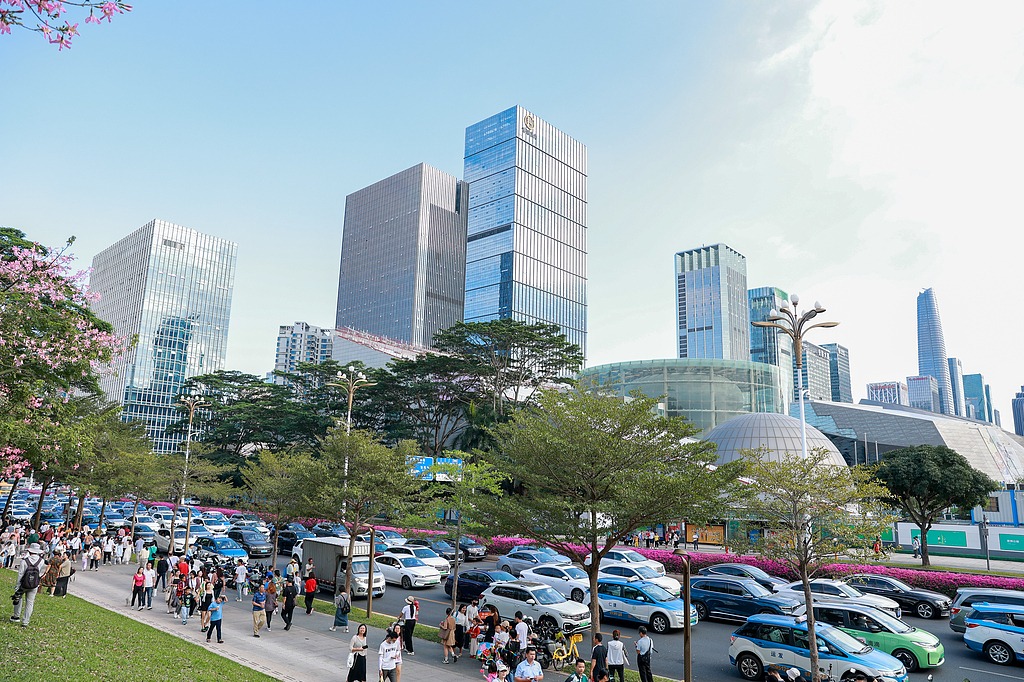Economy's resilience, infrastructure shine in 2019 data
By Zhou Xuezhi | China Daily | Updated: 2020-01-06 09:46

For the second month in a row, China's official Purchasing Managers' Index or PMI for manufacturing stood at 50.2 in December 2019, remaining above the 50-point mark that divides expansion from contraction. This shows that the production and business confidence of China's manufacturing sector has recovered step by step. In addition, it signals the Chinese economic performance is worth looking forward to this decade.
This trend is in line with the Caixin China General Manufacturing PMI. Released by Caixin Media and IHS Markit, the index rose for five months in a row to 51.8 in November, its peak since 2017.
The pickup in macroeconomic data in November showed the strong resilience of Chinese economy. Moreover, China's stock market, a barometer of economic health, rebounded by more than 20 percent in 2019, which may indicate that the country's economy has begun to get through the tough times.
This year is the final one for China to secure a decisive victory in building a moderately prosperous society in all respects. A series of policy measures launched by the government to stabilize the economy started to take effect gradually, and we believe that the government will send a growing number of positive signals on its determination to stabilize the economy this year.
The Political Bureau of the 19th Communist Party of China Central Committee held a meeting on Dec 6, detailing the economic work to be carried out this year. The top decision-making body of the Communist Party of China offered solutions to problems in the area of infrastructure investment, touching upon several related aspects.
The Ministry of Finance also announced on Nov 27 that it had made an early allocation of 1 trillion yuan ($143.6 billion) of the 2020 local government special-purpose bond quota. The allotment amounted to 47 percent of the special-purpose bond quota in 2019, which was 2.15 trillion yuan.
This move will encourage infrastructure investments this year and will have a positive impact on the production and operational status of upstream and midstream enterprises. Therefore, it will hopefully underpin Chinese economic growth.
Besides, the runaway pork prices of mid-2019 have dropped since November. The increase in the Consumer Price Index was expected to weaken in December, thus providing space to the People's Bank of China, the central bank, to further implement its prudent monetary policy. And market liquidity will hopefully continue to improve.
China's economic growth will maintain an uptrend in the long run on the back of the Chinese government's commitment to improving the domestic business environment, strong promotion of the development of private enterprises, and encouragement to foreign investments in the country.
China kept lowering tariffs, stepped up the opening of the domestic financial market, and enacted a new Foreign Investment Law-all at a time when protectionism is on the rise globally.
Unlike the traditional models of economic growth, the Chinese new economy is relying on new models to achieve growth. The rebound in Chinese economic data in November might be preliminary confirmation of a successful economic transition and also provided space for transformation of economic growth models.
The latest economic data showed the results of a series of economic policies. China launched measures to boost the economy in all respects after the government vowed to coordinate efforts and policies to stabilize employment, finance, foreign trade, foreign investment, domestic investment and expectations at a Politburo meeting in July.
The effect of these policies started to appear gradually, after more than a year had passed.
On Nov 5, the PBOC cut the interest rate of one-year medium-term lending facility by 5 basis points to 3.25 percent. By providing a relatively loose liquidity environment, the central bank reduced the financing costs of companies and stabilized market expectations.
According to data released by the National Bureau of Statistics, the profits of industrial enterprises above designated size (which refers to industrial enterprises with annual main business revenue of 20 million yuan or more) increased by 5.4 percent year-on-year to 593.91 billion yuan in November. The growth rate was 15.3 percentage points higher than the figure in October.
The increase in the growth rate of industrial production and sales, coupled with the narrowing of a decrease in the industrial Producer Price Index, led to the huge rebound in the profits of industrial enterprises above designated size.
Having said that, the economic rebound still faces challenges in terms of continuity, as China's economy is under a lot of downward pressure. Although investment has growth potential, consumption growth still faces uncertainties to a certain extent. In particular, auto sales that can drag down the data of consumption have not bottomed out yet.
The future direction of the China-US economic and trade relations could be in either direction-up or down. The global economy has not completely gotten through the downturn. These are all unfavorable external factors that will likely affect efforts to stabilize the Chinese economy.
Zhou Xuezhi is assistant researcher at the Institute of World Economics and Politics, which is part of the Chinese Academy of Social Sciences in Beijing.
























